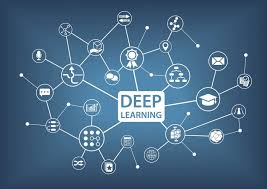Source: menafn.com
In 2012, a researcher Krizhevsky entered the renowned image classification contest – ImageNet with a Convolutional Neural Network called AlexNet designed by his team. And to everyone’s astonishment, AlexNet won the first prize by beating other contemporary techniques by a huge margin of accuracy. With this success, suddenly the AI research community became more enthusiastically active with Deep Learning experimentations and more promising results started pouring from them over the next couple of years.
This breakthrough in Deep Learning suddenly revived the mainstream interest in Deep Learning and its elder brother Machine Learning. Media started creating a buzz around the popular term Artificial Intelligence and soon investors and decision-makers were ready to put their money on AI. This resulted in big and small companies across many industries adopting Artificial Intelligence for either bring innovation or for solving their problems. And it is not surprising that the Financial Industry was also the early adopter of this technology.
Before understanding how Deep Learning impacted the world of Finance let us first understand what it really is.
Deep Learning
Deep Learning is a specialized field of Machine Learning that only deals with specific types of models known as Artificial Neural Network (ANNs). You might think that Deep Learning is a new technology built overnight in the 2010s, but you would be surprised to know that it has its roots dating back to the 1940s.
Most of the deep learning concepts and algorithms that we are working with right now were actually proposed many decades back. Researchers at that time were limited by the computational hardware of their time. However, things started to change after the 2000s when there were tremendous advancements in computational hardware and researchers could train huge neural networks really fast on GPUs. And this leads us to the start of our story that how a Deep Learning model AlexNet disrupted the machine learning community overnight by winning ImageNet competition in 2012.
How Neural Network Works
A vanilla neural network architecture has three layers –
- Input Layer, which represents the input data.
- Hidden Layer, which consists of one or many artificial neurons.
- Output Layer, which represents the output of the network.
In the basic architecture, all neurons are connected with each other by weights and information flows in one direction only.
When an artificial neuron receives the incoming signals, it applies dot product between the signal and its weights. It further aggregates the dot products and applies an activation function to produce output signals for the next layer.
It so happens that when there are many hidden layers of artificial neurons, the network shows more accurate results. Such huge neural network models are what referred to as Deep Learning models.
Use of Deep Learning in Finance
Now that we have a brief understanding of deep learning, let us now understand how Deep Learning is getting used by FinTech.
The most popular use of Deep Learning in Finance is the time series analysis of the stock market. It is used for predicting the growth or crash of the stock market and also to perform algorithmic trading .
Another use case is to scrape financial news from the internet and use Deep Learning for performing sentiment analysis of people’s views for a particular stock or overall market. This information is useful to understand in which direction the market is heading.
According to Deltec Bank, Bahamas – ‘Timely detection of anomalous transactions is very crucial for banks and payment gateways to prevent financial fraud. They are utilizing Deep Learning neural networks to increase the accuracy of detecting such transactions more accurately in realtime.
More innovative FinTech companies are using a convolutional neural network to automate the process of insurance claims with computer vision. Users just need to upload the image of a damaged car or house and the system can automatically asses the damage to process the claim in a speedy manner.
When it comes to innovation, the sky is the limit. So let us conclude this post by the most innovative use case of deep learning that has redefined or if we can say eliminated the concept of POS. Amazon recently opened a cashier-less Amazon Go store where a person can just pick up the items from shelves and leave. Meanwhile, the sophisticated deep learning models detect that a particular person has picked up a specific item and it deducts the amount from their Amazon Pay account accordingly.
Conclusion
The critics of Deep Learning often point out that it works like a black box where its decision cannot be explained. At times traditional machine learning algorithms are preferred over deep learning. But Deep Learning can go beyond just making predictions and help FinTech to implement more out of the box innovations like cashier-less stores.
Disclaimer: The author of this text, Robin Trehan, has an Undergraduate degree in economics, Masters in international business and finance and MBA in electronic business. Trehan is Senior VP at Deltec International www.deltecbank.com . The views, thoughts, and opinions expressed in this text are solely the views of the author, and not necessarily reflecting the views of Deltec International Group, its subsidiaries and/or employees.
About Deltec Bank
Headquartered in The Bahamas, Deltec is an independent financial services group that delivers bespoke solutions to meet clients’ unique needs. The Deltec group of companies includes Deltec Bank & Trust Limited, Deltec Fund Services Limited, and Deltec Investment Advisers Limited, Deltec Securities Ltd. and Long Cay Captive Management.
